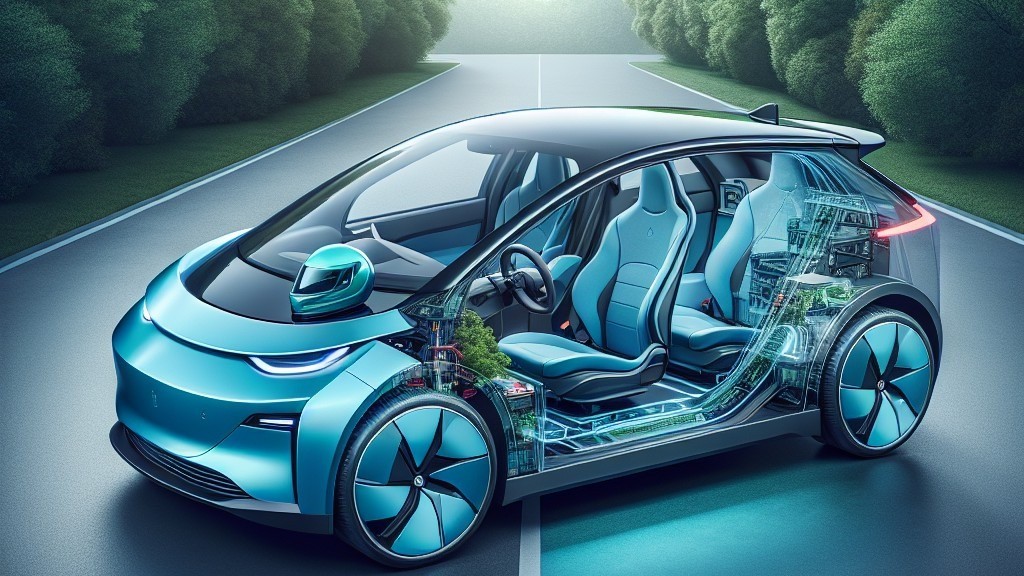
A few weeks ago, a Latvian TV segment by journalist Pauls Timrots caught my attention. He talked about that strange heaviness drivers sometimes feel on long trips — not quite fatigue, not quite boredom, but a foggy drowsiness that creeps in, especially at night or in stop-and-go traffic.
What struck me is that most people know the feeling but don’t have a name for it. We assume it’s just “tiredness.” Yet the culprit, in many cases, is something more invisible: carbon dioxide (CO₂) buildup inside the cabin.
I first learned about this years ago in tropical cities, where taxis often ran their air conditioning permanently in recirculation mode. With the fresh-air intake closed and windows up, CO₂ levels in those cabs would climb to levels I’d normally only expect in a packed lecture hall with no ventilation. I once measured 5,000 ppm in a taxi — a concentration known to cause drowsiness, headaches, and sluggish thinking.
Show the driver the “fresh air” button, and within minutes the numbers fell, along with the yawns.
Fast forward to today. The difference is that the “driver” making that decision in your car is often not you — it’s the HVAC algorithm. To save energy, modern cars (whether ICE, hybrid, or EV) lean heavily on recirculation. Some models even flip into recirc automatically, without a clear dashboard indicator, sometimes even in manual climate mode. Unless you’re carrying a CO₂ sensor (like an Aranet), you may never know why you suddenly feel like nodding off.
What the Science Shows
Outdoors, CO₂ sits at about 420 ppm. Most building standards aim to keep indoor levels below 1,000 ppm, because research links higher levels to impaired concentration and increased fatigue. By 1,500–2,000 ppm, many people feel distinctly heavy-eyed.
And in cars? Levels climb shockingly fast. One Swedish study found that with four people in a closed cabin, CO₂ reached 2,500 ppm within five minutes — and 6,000 ppm within 20 minutes — even with some ventilation. In real-world driving tests, single-occupant vehicles often cross 1,500 ppm in less than half an hour when the HVAC is favoring recirculation.
That’s not just an air quality number. That’s a road safety issue.
What AI Tools Reveal About Awareness
I ran this topic through a few AI-powered trend analysis tools and forum scans, and the pattern was striking:
- On mainstream driver forums, there’s almost zero discussion of CO₂. People talk about foggy glass, stale air, or “feeling tired,” but rarely connect it to cabin CO₂.
- In niche communities — Tesla owners, Rivian forums, overlanders, and RV groups — the conversation is growing. These are the people who buy CO₂ meters and post screenshots of 2,000+ ppm.
- Academic research is solid and ongoing, but mostly locked away in journals. Few car magazines or mainstream outlets ever reference it.
- Automakers? Silent. Some premium brands include CO₂ sensors, but they’re marketed as “air quality features” (to block pollution), not as safety tools.
What AI essentially shows is a disconnect: the science is mature, the user experience is common, but the public conversation is minimal.
Practical Fixes for Drivers
The good news is that once you know what’s happening, it’s not hard to fix:
- Prefer fresh air over recirculation when cruising.
- If your car insists on switching back to recirc, try toggling it off manually (some Toyotas respond to this reset trick).
- In stubborn systems, crack the window 1–2 cm. Noisy, yes. Effective, absolutely.
- Keep your cabin filter clean — a clogged filter nudges the HVAC to favor recirc.
- Consider carrying a small CO₂ meter. Once you’ve seen a cabin climb past 1,500 ppm, you’ll never unsee it.
For Automakers and Fleets
This is an easy win for safety and trust.
- Show recirculation state clearly in the UI. Don’t override it without a visible cue.
- Add a basic CO₂ sensor and bias toward fresh air when levels rise.
- Offer a persistent “Fresh Air Priority” setting.
- For fleets: train drivers to recognize drowsiness linked to air quality, not just lack of sleep.
Why It Matters
Older cars did what you told them: fan on, recirc off, end of story. Newer vehicles are smarter, but their logic is mostly about efficiency and temperature comfort — not human alertness. Energy savings are important. But alert drivers are non-negotiable.
This is one of those invisible safety issues that deserves daylight. Just as we take seat belts, ABS, and air filters for granted, we should start treating fresh air as a core safety feature, not a luxury setting.
Until then, the responsibility is on us as drivers: know the signs, press the button, crack the window.
Because the next time you feel a wave of unexplained drowsiness behind the wheel, it may not be your body telling you to sleep. It may just be the air you’re breathing.
Curious to hear from others: Have you ever noticed this effect? Have you measured CO₂ in your car? And should automakers be more transparent about it?
Subscribe & Share now if you are building, operating, and investing in the digital infrastructure of tomorrow.
#RoadSafety #DriverSafety #AutomotiveInnovation #VehicleSafety #AirQuality #CarbonDioxide #CabinAir #HealthAndSafety #HumanFactors #TransportationSafety #FutureOfMobility #SustainableTransport #SmartCars #ConnectedCars #AutomotiveEngineering #ArtificialIntelligence #AIInsights #DataDriven #SafetyFirst #LinkedInThoughtLeadership

